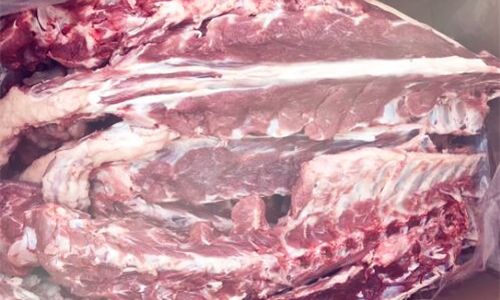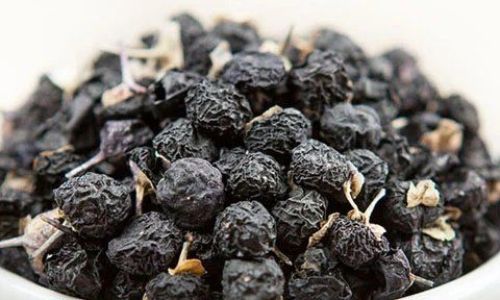In the vast realm of culinary adventures, few dishes evoke as much intrigue and delight as goat rack, also commonly known as sheep spine or yang xie zi in Mandarin. This unique culinary treasure, often associated with Northern Chinese cuisine, particularly in Beijing, offers a flavor profile that is both rich and complex, blending the succulence of meat with the delicate bone marrow that lies within. But among the various sections of the goat rack, which part offers the ultimate gastronomic experience? This article delves into the intricacies of goat rack, exploring the different sections and why certain parts are considered the most delectable.

Understanding Goat Rack: A Culinary Primer
Goat rack, derived from the spine of a goat, is a cut that encompasses the vertebrae along with the attached meat, cartilage, and bone marrow. It is a beloved dish during colder seasons due to its warming and nourishing properties. The preparation of goat rack can vary widely, from boiling and steaming to braising and grilling, each method extracting unique flavors and textures from the meat and bones.
One of the primary appeals of goat rack lies in its nutritional benefits. Rich in collagen, protein, and essential minerals like calcium and phosphorus, it is prized for its ability to strengthen bones, improve skin elasticity, and even aid in digestion. However, beyond its nutritional profile, it is the harmonious blend of textures and flavors that makes goat rack a standout dish. The tender meat, the chewy cartilage, and the creamy bone marrow all contribute to a multi-layered eating experience that is both satisfying and memorable.
Sections of Goat Rack: A Breakdown
To determine the best part of goat rack, it is essential to understand its various sections. Typically, goat rack can be divided into three main parts: the neck, the rib section, and the lumbar area. Each section offers distinct characteristics that influence its taste, texture, and cooking methods.
-
Neck Section: The neck of the goat rack is characterized by its thin bones and relatively lean meat. This area is often more chewy due to the higher concentration of connective tissues and muscles. While it may not be as fatty as other sections, the neck provides a robust, meaty flavor that is perfect for long, slow cooking methods like braising. The resulting dish is rich in flavors and offers a satisfying chewiness that some diners appreciate.
-
Rib Section: The rib section of the goat rack is perhaps the most sought-after part. It encompasses the area where the ribs attach to the spine, offering a combination of meat, cartilage, and bone marrow. The meat here is tender and flavorful, while the cartilage adds a delightful, slightly crunchy texture. The bone marrow, especially abundant in this section, is creamy and rich, providing an indulgent contrast to the leaner meat. The rib section is ideal for steaming or boiling, as these methods allow the natural flavors to shine without overpowering them with spices or sauces.
-
Lumbar Area: The lumbar section of the goat rack, located towards the lower back of the goat, is characterized by larger bones and thicker meat. This area tends to be more muscular and thus, can be quite tough if not cooked properly. However, when slow-cooked or braised, the meat becomes tender and flavorful, with the bones yielding a generous amount of marrow. The lumbar area is often favored for dishes that require longer cooking times, as it allows all the components to meld together, creating a deeply satisfying broth or stew.

The Best Part: A Culinary Consensus
When asked which part of the goat rack is the best, opinions can vary widely. However, many culinary experts and avid food enthusiasts tend to agree that the rib section offers the most balanced and enjoyable eating experience. The combination of tender meat, crunchy cartilage, and creamy bone marrow in this area creates a symphony of flavors and textures that is hard to resist.
The rib section’s popularity is further enhanced by its versatility in cooking. Whether steamed, boiled, or even grilled, the rib section retains its inherent flavors while absorbing seasonings and spices beautifully. This makes it an ideal candidate for a wide range of culinary preparations, from simple, home-cooked meals to elaborate restaurant dishes.
Moreover, the rib section’s appeal extends beyond its taste. The bones in this area are relatively easy to handle and eat, making it a more accessible choice for diners who may not be as familiar with bone-in cuts. The presentation of the rib section, with its neatly arranged bones and meat, also adds to its visual appeal, making it a favorite for festive occasions and special meals.
Conclusion: A Culinary Journey Through Goat Rack
In conclusion, the quest for the best part of goat rack is a journey through flavors, textures, and cooking techniques. While each section of the goat rack offers unique qualities that make it a delightful culinary experience, the rib section stands out as the most popular and enjoyable choice. Its balance of tender meat, crunchy cartilage, and creamy bone marrow, combined with its versatility in cooking, makes it a standout dish that is cherished by food enthusiasts around the world.
As you embark on your own culinary exploration of goat rack, remember that the best part is ultimately a matter of personal preference. Experiment with different sections and cooking methods to discover your own favorite part of this delightful and nourishing dish. Whether you prefer the robust flavors of the neck, the indulgent richness of the rib section, or the hearty satisfaction of the lumbar area, goat rack promises a culinary adventure that is both satisfying and memorable.





0 comments